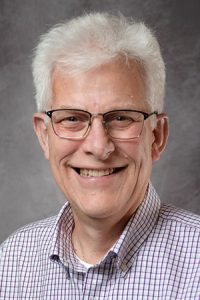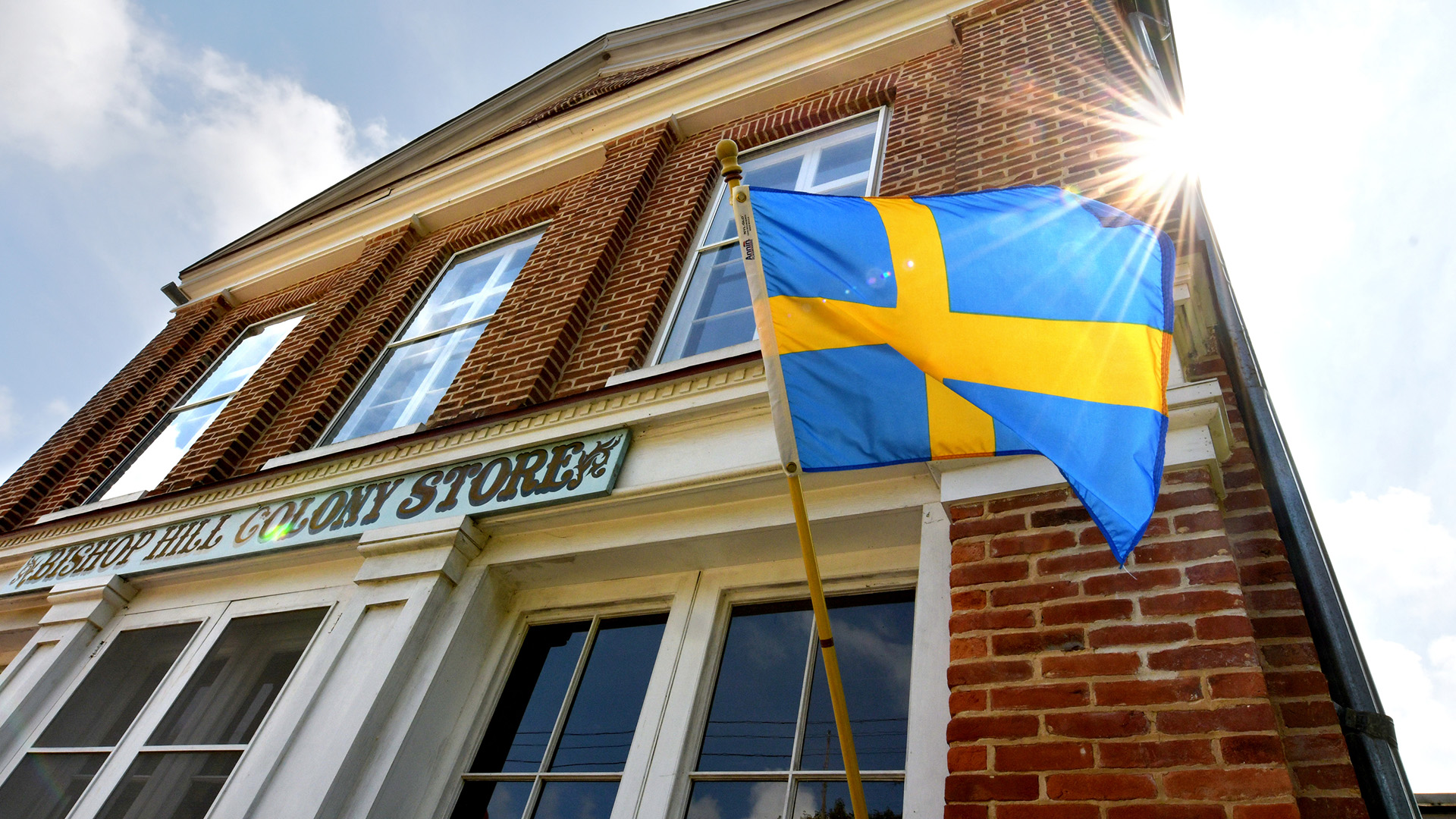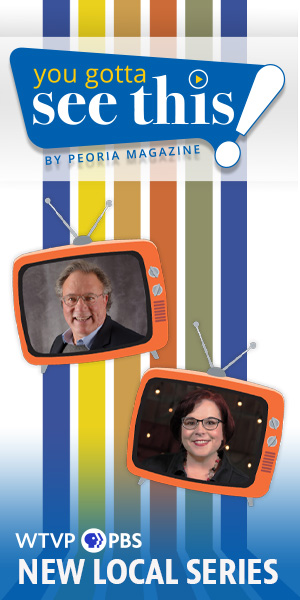Founded as a refuge of religious freedom, Bishop Hill marches forward on its Swedish heritage and modern hospitality
Religious freedom is fundamental to the American experience. From the beginning, immigrants came to the nation’s shores to escape persecution for their beliefs. They still do today.
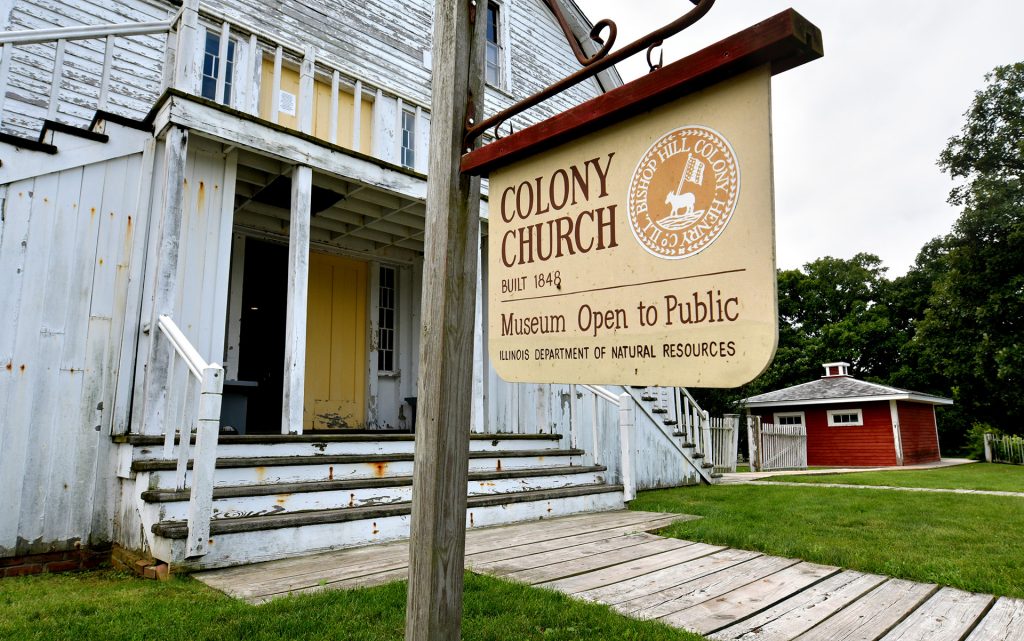
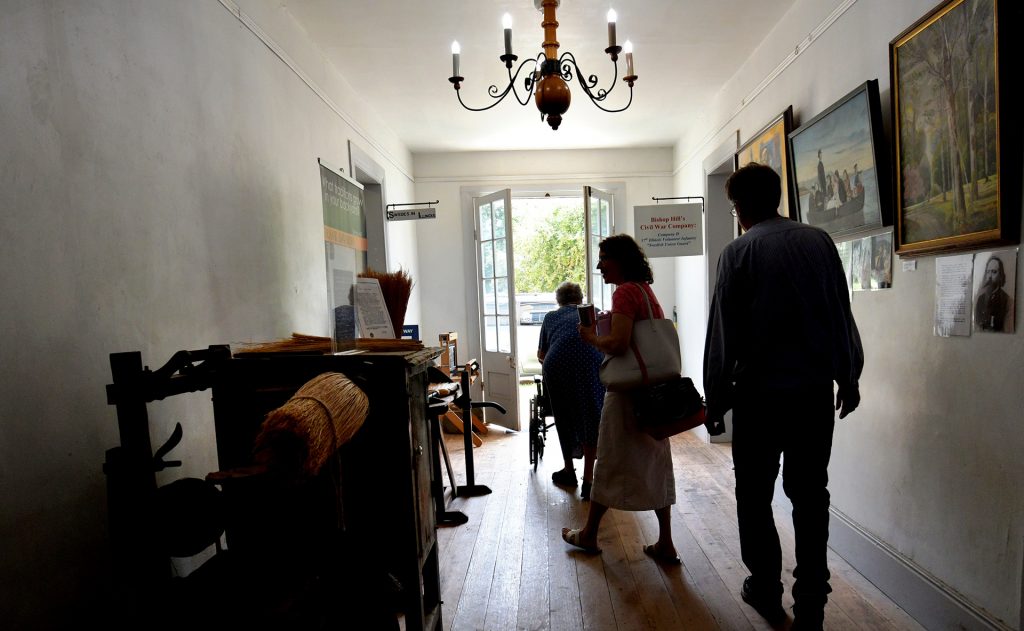
A group of Swedish believers became a part of that great American narrative when they followed a charismatic young leader across the Atlantic to Henry County, Illinois, in the mid-1800s. There they founded a community that still inspires and sustains residents generations later.
Welcome to Bishop Hill, population 125.
Evolving, and Not
Founded as a religious commune in 1846, Bishop Hill has gone through many phases. In some ways it is a typical rural Illinois village. But in many other ways that matter — a sense of community, history, shared heritage and thriving business — it is anything but ordinary. For decades it has attracted tourists, genealogists and people of Swedish extraction from around the world.
In 1984, Bishop Hill was declared a National Historic Landmark, with a spot on the National Register of Historic Places. Sweden’s King Carl XVI Gustav joined in the village’s sesquicentennial celebration in 1996.
Many historians say Bishop Hill opened the door to later Swedish migrations, with millions ending up in the likes of Galesburg, Chicago, Minnesota and elsewhere across the Midwest. It represents an enduring commitment to historic preservation unmatched by cities many times its size.
It is estimated that up to 20% of current residents are direct descendants of the original colonists. In the gift shops and restaurants, art studios and pioneer life demonstrations, there is an authentic desire to educate, protect and preserve the town’s rich heritage, not just in a museum — though there are several historical collections — but as a living place with a proud past and promising future.
“It’s just a really nice community,” said Mike Funke, the village president, though everyone calls him mayor. “It’s the kind of place where you don’t have to worry if you turn around and aren’t watching your kids for a minute. You know your neighbor will be looking out for them.”
Funke has spent all of his 43 years in Bishop Hill. During his tenure atop village government, he has prioritized upgrades to an aging water system, street maintenance, and new street lighting — some of the same issues faced by any 177-year-old town.
“I’m a firm believer in new ideas and change,” he said. “Things can’t stay the same forever.”
Yet, many aspects of life in Bishop Hill are the same as they’ve always been, at least on the surface.
Coming to America
This pioneer story begins with Eric Janson, a lay minister who defied Sweden’s state-sponsored Lutheran Church by, among other things, holding prayer meetings and reading the Bible at home without a priest present. After provoking the authorities and landing in prison, Janson concluded that the only way he and his followers could worship as they wanted was to leave Sweden.
“Janson painted himself a prophet who believed the state church was more concerned with making money than taking care of their flock,” said Bryan Englebrecht, assistant site manager for the Bishop Hill State Historic Site.
Janson and many followers fled to America in 1846. Poor living conditions, lack of food and disease claimed many lives. But the survivors broke the prairie, built dormitories for communal housing and established a church. They named the settlement after Janson’s Swedish birthplace: Biskopskulla.
More followed, with Bishop Hill’s population swelling to a mid-19th century peak of 1,400. The colonists developed industries around making brooms, buggies and wagons, furniture and textiles that brought revenue and attention from the outside world. Eventually, there was a hospital, a school, a hotel, blacksmith shop, mill and other commercial enterprises. The Big Brick, a dormitory that contained 96 apartments, once stood on ground now occupied by a baseball field. At the time it was constructed, it was the largest brick structure west of Chicago. It was destroyed by fire in 1928.
For Janson, the utopian dream ended just four years after he arrived in America when he was murdered by the disgruntled husband of a loyal commune member at the Henry County Courthouse in Cambridge. He is buried in Bishop Hill Cemetery, his marker engraved in English and Swedish. A group of trustees held the colony together for a time, but by 1861 it was dissolved and the assets distributed among residents.
That could have marked the end, but the children and grandchildren of the settlers kept the village and its heritage alive. Groups such as the Old Settlers’ Association and the Bishop Hill Heritage Association began working to save the historic structures, and in 1946, the Colony Church, Village Park and several other buildings were gifted to the State of Illinois, which set about restoring them.
Living in a Living Museum
Unlike other historic settlements that can be “a mishmash of historic structures,” according to the Bishop Hill Arts Council website (visitbishophill.com), Bishop Hill is “a living, fully functional village” with a mayor and modern services.
Cheryl Dowell, 84, is a fifth-generation descendant of the original settlers. She has lived in or near the village since 1942. She remembers her parents and grandparents speaking Swedish, which they refused to teach her.
“They told me, ‘This is America and the language is English,’” she said.
So Dowell learned English at the Old Colony School, which survives as a meeting venue. Two of Dowell’s four children and their families also live in the village, bringing the generations represented to seven.
“They love Bishop Hill and love their Swedish heritage,” Dowell said. “It really warms my heart.
“I’ve stayed in Bishop Hill because we are indebted to the village and our ancestors,” she added. “They sacrificed to make a better life for their descendants.”
A tour of the Colony Church might be led by Martha “Marty” Ray, 81, a volunteer guide for 20 years. She is a sixth-generation resident whose father ran a local gas station, now a popular restaurant called The Filling Station. She lives in the home she grew up in, a former meat storage building.
In a town of only a few hundred, “we had to entertain ourselves,” she said. She recalls roller skating on the second floor of the Bjorklund Hotel, which still stands, and using portraits by now-famous folk artist and one-time resident Olof Krans to play “school” in the church. (The portraits were make-believe students.)
Krans’ paintings are now safely housed at the Bishop Hill Museum on the south end of town.
Even for those without deep roots, the affinity for the village is strong.
“I consider everyone who comes in here to be part of my family,” said Ann Stodgel, who with her husband has owned the P. L. Johnson Dining Room, known for its Swedish meatballs and bright yellow exterior, since 1984.
Stodgel gets emotional when talking about customers who drove from the Quad Cities and Peoria to get take-out meals during the pandemic.
“They were here for us,” she said. “They didn’t want us to go away like so many others did. It was a humbling experience.”
Joella Krause also brags ties to the founders.
“To me, Bishop Hill is a little microcosm of Swedish heritage,” Krause said. “You can’t go to very many places where you can see this concentration … the buildings and the descendants who still live here.”
Krause, as current president of the Old Settlers’ Association, said the Colony Church is a must-see.
“To me, the church represents why people came here … because they weren’t accepted in Sweden,” she said. “It is still a very important piece of the town.”
Lucia Nights and More
Village Park is center stage for many of the events that fill the calendar. With plenty of shade trees, a gazebo, Civil War statue, an 1896 monument to the original settlers and a white picket fence surrounding it, it’s not unusual to see the space filled with visitors for everything from a book fair or quilt show to the Midsommar Music Festival, Old Settlers’ Day and Jordbruksdagarna (Swedish for “earth work days”), a fall harvest festival.
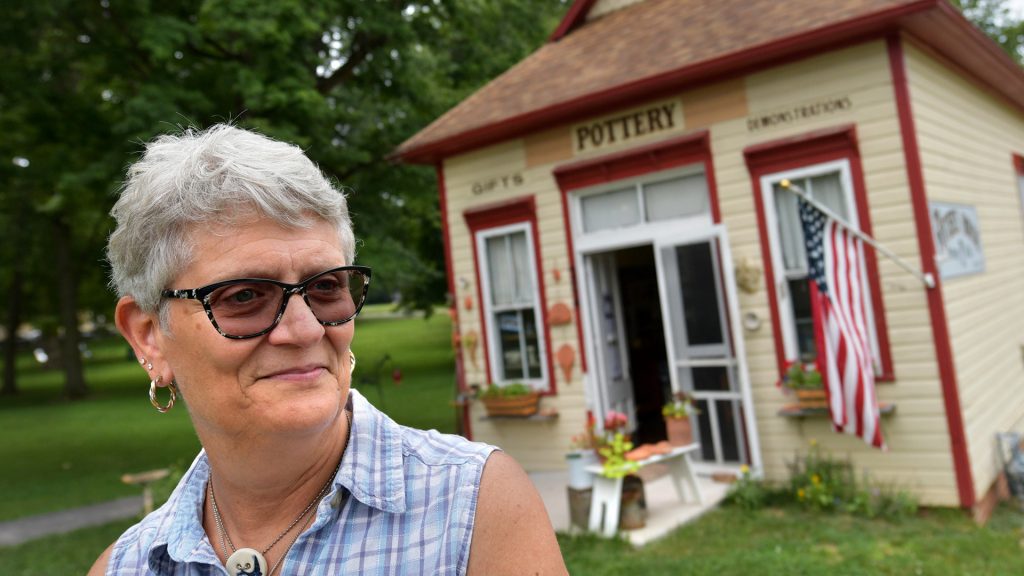
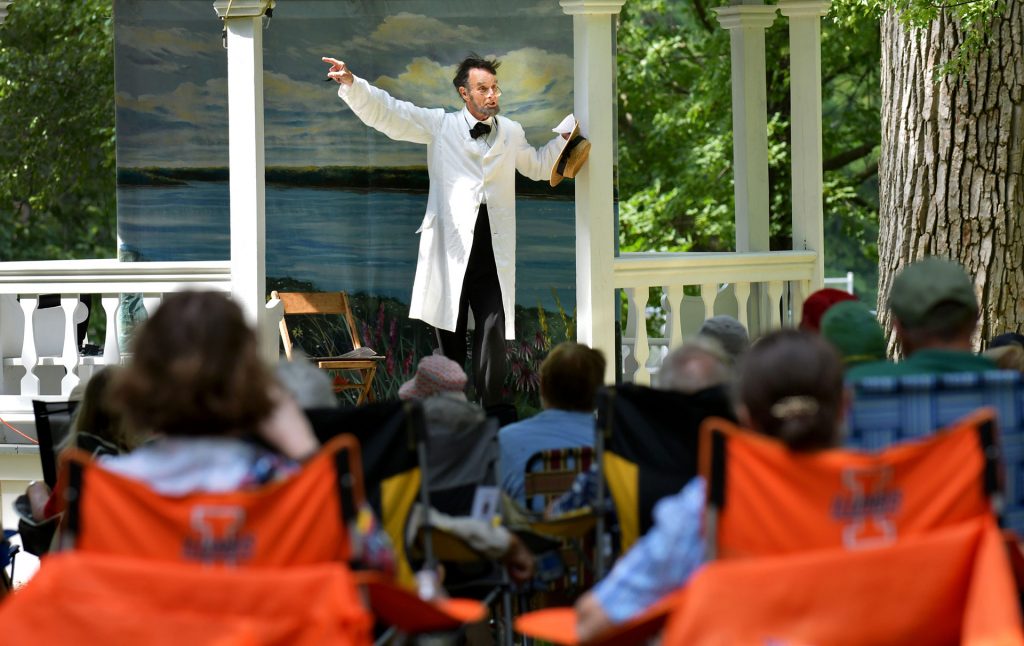
Christmas is a special time in Bishop Hill. The annual Julmarknad Christmas Market features traditionally decorated shops, music, Swedish foods, and a Christmas Cookie Walk. Candles twinkle in every window, luminaries line the sidewalks, and young girls dressed as St. Lucia serve treats during the Lucia Nights Festival of Lights in early December.
Visitors will find artisans demonstrating weaving and broom making at the Prairie Arts Center. Likewise, the Bishop Hill Creative Commons offers regional artists, traditional crafts and storytelling. For dining experiences, baked goods, coffee, and authentic Swedish goods, the Old Colony Store, H. Wyatt, Entwined Boutique and Krans Kafe should be on the agenda. There is locally made pottery at Prairie Dog Pottery, J. Goard Pottery, Hantverk Galleri and others.
Accommodations are available at Twinflower Inn in the former Colony Hospital, Lilla Vita Guesthouse, and just a few miles away in Galva and Kewanee.
Funke said there is no need for a chamber of commerce. “They promote each other because what’s good for one usually benefits all,” he said.
Historians still debate whether the Bishop Hill colony was a success or failure.
“How could you call it a failure?” Dowell said. “They came to a new country and farmed the best soil in the world. That alone is a success.”
The fact that Bishop Hill is still here after 177 years speaks for itself.
Explore Bishop Hill
Bishop Hill Arts Council:
visitbishophill.com
Bishop Hill Heritage Association:
bishophillheritage.org
Bishop Hill Old Settlers’ Association:
bholdsettlers.org
Bishop Hill State Historic Site:
facebook.com/BishopHillSHS
